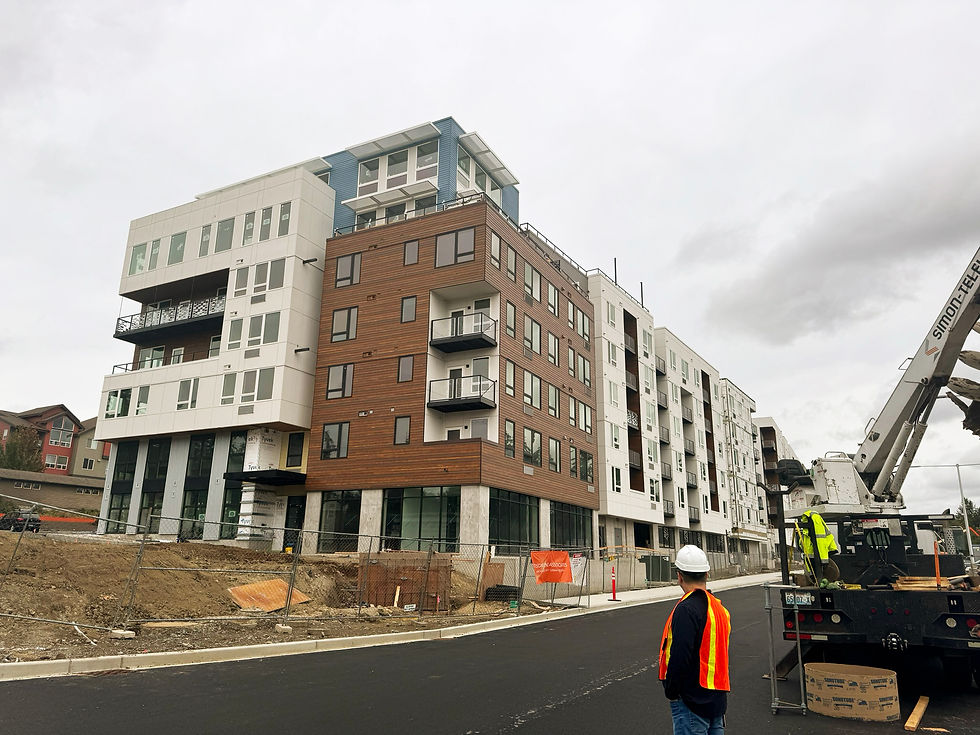Quality Control (QC) and Quality Assurance (QA) are essential components in delivering successful multifamily projects. Ensuring the highest standards of QC and QA is paramount to meeting critical deadlines, maintaining design integrity, and delivering projects on time and within budget. In this blog, we explore effective strategies for QA/QC in multifamily projects, drawing insights from Tiscareno's comprehensive approach and expert advice from our GC partners.
1. Project Kick-off: Setting the Stage for Success
The journey to quality excellence begins at the project kick-off. Tiscareno emphasizes developing a comprehensive schedule that includes all deadlines and milestones. This ensures a common understanding among all team members and sets clear expectations for jurisdictional submittals and other critical dates. A well-structured schedule is the backbone of a successful project, laying the foundation for efficient and coordinated efforts throughout the project lifecycle.
2. Coordination with Consultants: Early and Often
Early coordination with consultants is crucial to avoiding costly setbacks. Tiscareno employs tools like Bluebeam Studio, PDF overlays, and Autodesk’s BIM 360 to facilitate real-time collaboration. These tools enable coordinated efforts across disciplines, ensuring that drawings, designs, and specifications are harmonized from the outset. Utilizing BIM 360 for clash detection allows potential issues to be identified and resolved before reaching the construction phase, thereby minimizing delays and added costs.

3. Establishing Standards: Level of Development (LOD)
To ensure clarity and mutual understanding, Tiscareno establishes Level of Development (LOD) standards within project contracts. These standards, as defined by the AIA, outline the expected level of documentation required. By agreeing on LOD standards in advance, the contractor, client and architect have a clear understanding of the detail level for deliverables, ensuring these expectations are met consistently.
4. Timely and Comprehensive Document Reviews
Internal quality control reviews are a cornerstone of Tiscareno’s approach. These reviews are scheduled at key milestones and conducted by senior architects not assigned to the project, providing a fresh perspective. Additionally, Tiscareno actively seeks feedback from clients, contractors, and sub-consultants to address any concerns or discrepancies before document submission. This collaborative review process ensures that all project documentation is thorough and accurate, in an effort to minimize the risk of errors during construction.
A Contractor’s Viewpoint
1. Robust Pre-construction Planning
General Contractors highlight the importance of detailed pre-construction planning. This phase involves meticulous planning to anticipate potential challenges and integrate QA/QC measures from the outset. Regular stakeholder meetings ensure alignment of expectations and early resolution of any emerging issues. A proactive approach during pre-construction sets the stage for smooth execution and delivery quality.

2. Real-time Monitoring and Reporting
Implementing advanced digital tools for real-time monitoring of construction progress and quality metrics is essential. Project progress can now be monitored remotely, via construction site cameras and contractor walkthroughs uploaded for the architect's inspection, enabling immediate corrective actions when necessary. This level of transparency and control helps maintain high-quality standards throughout the
construction phase.
3. On-site Quality Control
Dedicated on-site QC teams play a vital role in maintaining quality standards. The architect team conducts, at a minimum, monthly inspections during construction to ensure adherence to project specifications. On-site QC teams are the frontline defense against quality issues, ensuring that the project remains on track and to specification.

4. Post-construction Reviews
At the project’s completion, detailed punch lists are developed to address any minor issues before final delivery. Establishing a feedback loop with the client and end-users provides valuable insights into the project’s performance and areas for improvement in future projects. This post-construction phase is crucial for continuous improvement and ensuring client satisfaction.
By integrating these strategies, we can’t stress enough the importance of early coordination, robust planning, real-time monitoring, and continuous feedback in ensuring the highest standards of QA/QC in multifamily projects. This holistic approach not only maintains the integrity of the design but also ensures timely and cost-effective project delivery, ultimately enriching communities for generations to come.
Christopher Dowell

Christopher is an experienced project architect and manager with over two decades of expertise specializing in multifamily, mixed-use, and retail developments. He excels in delivering seamless outcomes and assuming comprehensive responsibilities, overseeing construction documentation, quality control, and technical excellence. Chris’ recent successes include Waterfront Place, a 65 acre major redevelopment project in Everett, and the 300-unit Knox Apartments in Lynnwood.
Chris holds a Bachelor of Architecture degree from the University of Texas and is a registered architect in Washington, a member of the AIA, and a LEED Accredited Professional. His contributions have been recognized through publications in the Daily Journal of Commerce and Multifamily Executive Magazine.

Comments